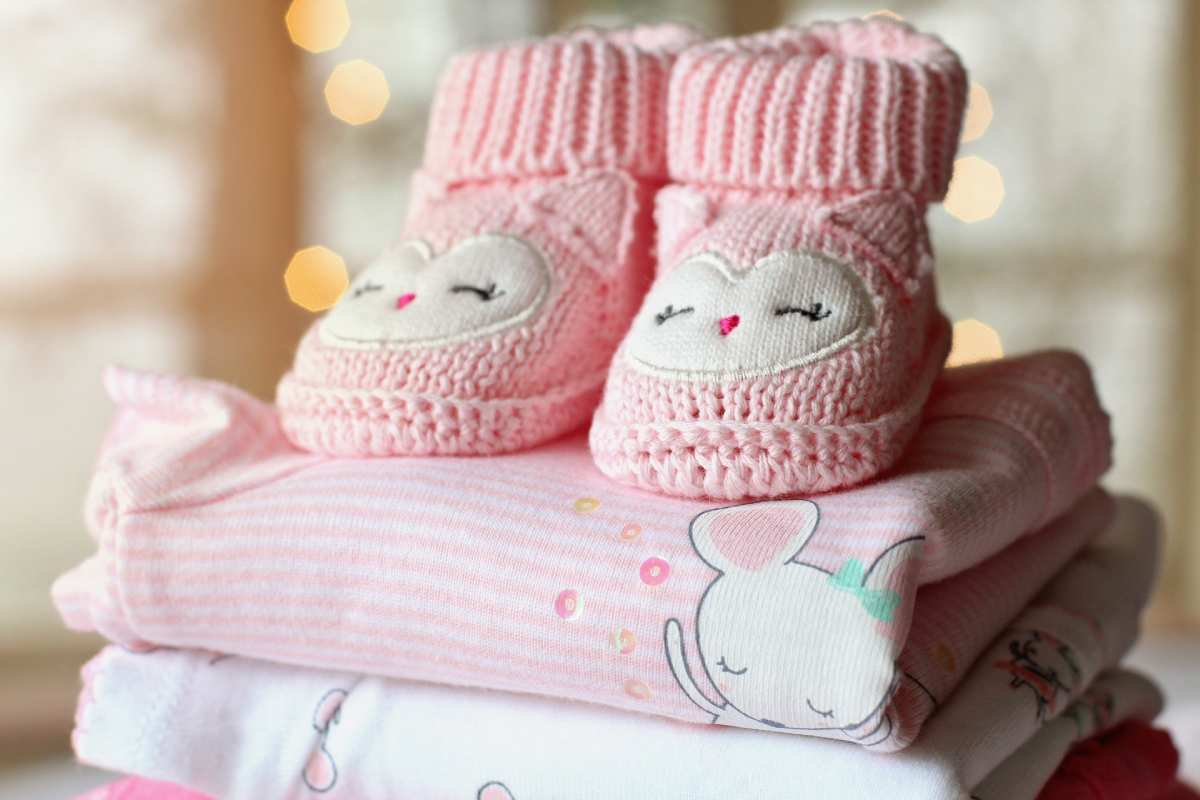If you’re one to read the tags on your clothes, you’ve probably come across the term moisture wicking before. And like many of us, you’ve probably got no idea what it means. Let’s take an in-depth look at this prevalent fashion industry phrase and examine how it can help new moms look after their little ones.
What Is Moisture Wicking?
Moisture wicking is a positive characteristic found in certain fabrics. Essentially, it refers to a fabric’s ability to rapidly absorb sweat and transfer it to the outer layer, which allows it to dry quickly.
How Does Moisture Wicking It Work?
Moisture wicking is caused by a phenomenon known as “capillary action” which causes sweat to pass through tiny holes in fabric. Molecular forces encourage this miracle effect, as the liquid enters the interior of the material. A pair of American scientists first discovered the process in the 90s, and it’s been widely used in the fashion industry ever since.
These days, textile manufacturers can improve moisture wicking by manipulating the size of the holes in their fabric. The process is generally done by engineering the structural properties of the fabric or yarn. Later, they’ll treat the surface layer of the material to enhance the effect even further. Granted, the science behind moisture wicking isn’t essential knowledge for the average consumer. What is important is to understand that this isn’t just some marketing gimmick or buzzword. Moisture-wicking may actually benefit you.
How Can I Tell If an Article of Clothing Has Moisture Wicking Properties?
The manufacturer will tell you, often in big bold letters, you cannot possibly miss. However, the tricky part is determining how effective their moisture wicking process is. At this stage, there are no regulations that dictate the language used in moisture wicking claims. As long as a fabric contains these properties, a brand can advertise it, however they see fit.
Generally speaking, larger and more reputable brands will have better moisture wicking properties. Nevertheless, there are certain fabrics you should keep an eye out for as well.
Which Fabrics Have Moisture Wicking Properties?
Not all fabrics are created equal, as some are far better at moisture wicking than others.
Synthetic fabrics tend to fare best. Unlike natural fibres, synthetics are “hydrophobic” or, in layman’s terms, more water resistant. Essentially, synthetics are better equipped to block water from penetrating the fabric, which helps to keep us dry. Have you ever wondered why nylon and polyester are such prevalent exercise fabrics? That’d be for their advanced moisture wicking capability.
Conversely, natural fibres tend to be worse at moisture wicking, and few perform as poorly as cotton. The natural fabric quickly becomes saturated when you sweat and will require a long time to dry again, which is far from ideal. Although some brands do engineer cotton for optimum moisture wicking performance, it’s still nowhere near as effective as its synthetic counterpart.
A surprising exception to the rule is wool, whose inherent moisture wicking properties have long been known. The material’s numerous tiny openings are great at absorbing sweat and releasing them on the other side to dry.
Why Should I Bother With Moisture Wicking?
Sweat is an essential bodily function that regulates our temperature, by cooling us down, as it evaporates on our skin. Once our core temperature has been lowered to an acceptable level, we automatically stop sweating. Non-moisture wicking fabrics work against this process by absorbing and retaining our sweat, which fools our bodies into thinking we needn’t sweat any more. Not only is this detrimental to our internal temperature control, but it also feels all gross and sticky to the touch.
Fabrics with moisture wicking, on the other hand, complement our natural sweating process to help further cool our bodies down. Furthermore, we also feel drier, less sticky, and won’t smell as bad.
How Does Moisture Wicking Help My Baby?
A baby’s body temperature fluctuates widely as they sleep, causing them to sweat a lot and then feel all clammy and cold, as they cool down again. As you would expect, these unpleasant conditions cause them to wake up frequently throughout the night. Moisture-wicking clothing helps to regulate their temperature and keep them dry, which results in a better night’s sleep overall. And when your baby sleeps well, you will too.
What Kind Of Moisture Wicking Clothes Should I Buy For My Baby?
Given the most significant benefits come at night, grab your little one a nice pair of moisture wicking pyjamas that cover the bulk of their body. As for the grownups, moisture wicking is most effective in clothes you’ll sweat in like sports gear and hiking attire.
The Benefits of Moisture Wicking Are Vast
By purchasing synthetic or wool moisture wicking baby sleepsuits, you and your little one are all but guaranteed to get a better night’s sleep. And with the proper amount of rest each night, everything in life becomes ever so much easier.


